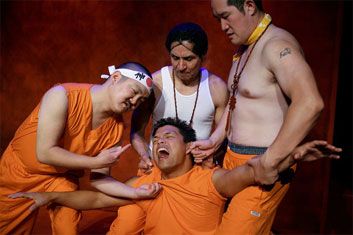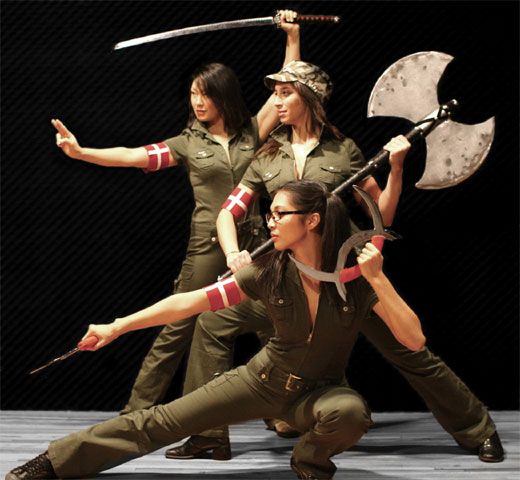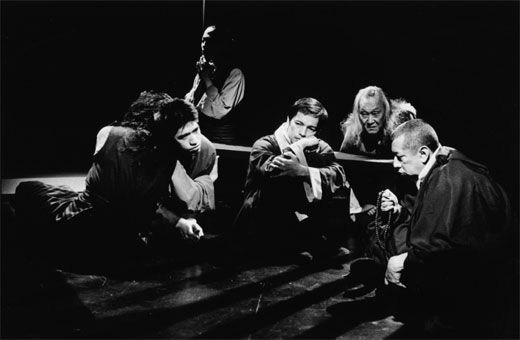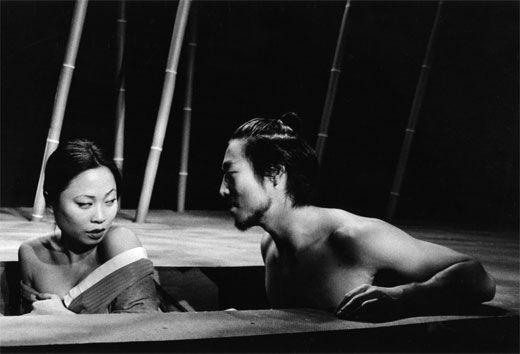Taking the Stage
The National Asian American Theatre Festival makes its debut
/https://tf-cmsv2-smithsonianmag-media.s3.amazonaws.com/filer/asianfest-fight.jpg)
After a successful run in London, producers of "Miss Saigon" set their sights on Broadway in 1990. An epic love story between a young Vietnamese girl and an American G.I. during the last days of the Vietnam War, the play generated several million dollars in advance ticket sales in the United States. Jonathan Pryce, a British actor, was cast as the Engineer, an Asian-European character and one of the play's leading roles.
Before the opening night, the Actors' Equity Association protested. The part, they said, should go to an Asian-American actor, and they refused to give Pryce permission to appear in the role. The producers shut down production for a brief period of time until the union backed down and allowed Pryce to play the character on Broadway. The actor went on to win a Tony for his performance.
Over the years, Asian-American performers have faced an uphill battle in the acting world. Directors either cast them in stereotypical roles or gave a Western actor the part of an Asian character. "In the '60s and '70s, the opportunities for Asian Americans were very limiting," says Tisa Chang, the Artistic Producing Director of Pan Asian Repertory Theatre. An actress and dancer on Broadway and in films, Chang founded the theater group in 1977 as a way to promote Asian-American performers. This year Pan Asian celebrated its 30th season.
Despite the success of Pan Asian and other theater groups, such as the 40-year-old East West Players in Los Angeles, California, the Asian-American acting community was disjointed. During a 2003 Theatre Communications Group gathering of minority theater groups in Florida, they found their solution.
Asian-American theater leaders including Chang and Jorge Ortoll, Executive Director of New York's Ma-Yi Theater Company, met at the conference and realized they shared the same casting and funding frustrations. "We just said that we have to put our foot down and get recognition," says Ortoll. "We decided to energize ourselves by continuing this with a festival and conference every other year."
Last year, Tim Dang, the Artistic Director of the East West Players organized the first conference to bring together Asian-American performers, called "Next Big Bang: The Explosion of Asian American Theatre." More than 200 people attended the Los Angeles event that hosted panel discussions about the challenges the artists face and the future of Asian-American theater. Although actors such as Lucy Liu, from movies such as "Charlie's Angels" and "Kill Bill," and Daniel Dae Kim, from the TV show "Lost," have made inroads into the acting world, the group wants to make a larger impact. "We need to make a statement, and we need to make it now," says Ortoll. And although the discussions were helpful, Ortoll, Chang and Mia Katigbak of the National Asian American Theatre Company felt it was time to showcase the work on a larger scale.
The leaders coordinated the first National Asian American Theater Festival, which will take place in New York City in June. The two-week event, which runs from June 11-24, will host more than 25 performers in 12 different venues throughout the city. The festival will include different types of acts from around the country: comedies, such as the sketch "The Caste and the Furious: Tokyo Drift"; dramas, like Jude Narita's "From the Heart: A Celebration of Asian & Asian American Women"; solo acts, including Kristina Wong's "Wong Flew Over the Cuckoo's Nest"; musicals, such as "Three Filipino Tenors"; and other productions, such as Pan Asian Repertory Theatre's play "Tea."
"The festival is important because we want to call attention to the explosion of Asian-American Arts," says Chang. Ortoll seconds the notion. "We're shouting and screaming to let everyone know we are here," he says. The Asian-American community has made long strides towards color-blind casting. Now, the actors have found power in unity. "Our community needs to embrace the arts as something very important in the fabric of our society. I would like to see Asian-American arts as something connected and meaningful in our community, and I think our festival will do that," says Chang. "This is a watershed moment in Asian-American history."
Whitney Dangerfield is a regular contributor to Smithsonian.com.



